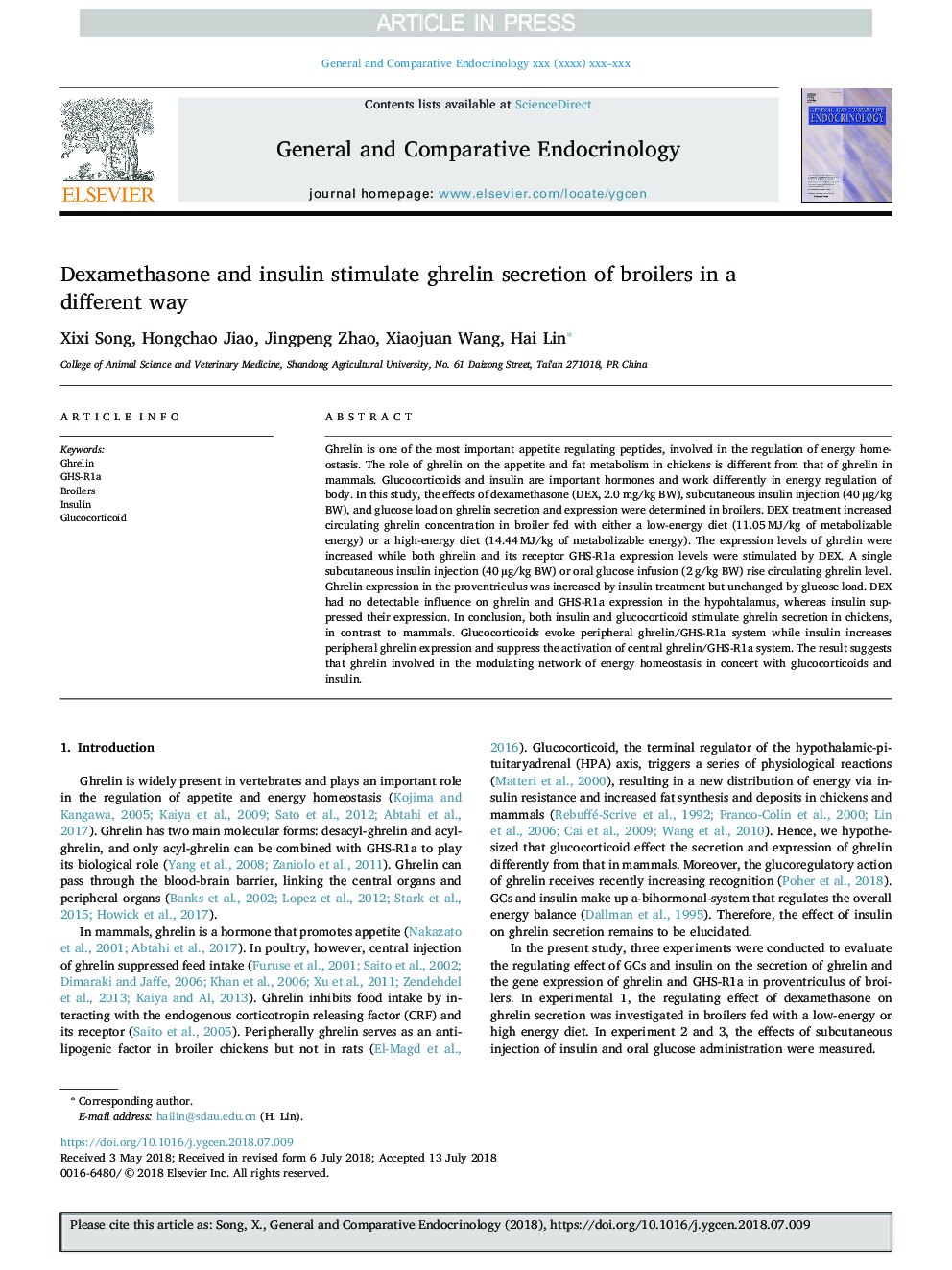| Article ID | Journal | Published Year | Pages | File Type |
|---|---|---|---|---|
| 11022664 | General and Comparative Endocrinology | 2018 | 8 Pages |
Abstract
Ghrelin is one of the most important appetite regulating peptides, involved in the regulation of energy homeostasis. The role of ghrelin on the appetite and fat metabolism in chickens is different from that of ghrelin in mammals. Glucocorticoids and insulin are important hormones and work differently in energy regulation of body. In this study, the effects of dexamethasone (DEX, 2.0â¯mg/kg BW), subcutaneous insulin injection (40â¯Âµg/kg BW), and glucose load on ghrelin secretion and expression were determined in broilers. DEX treatment increased circulating ghrelin concentration in broiler fed with either a low-energy diet (11.05â¯MJ/kg of metabolizable energy) or a high-energy diet (14.44â¯MJ/kg of metabolizable energy). The expression levels of ghrelin were increased while both ghrelin and its receptor GHS-R1a expression levels were stimulated by DEX. A single subcutaneous insulin injection (40â¯Âµg/kg BW) or oral glucose infusion (2â¯g/kg BW) rise circulating ghrelin level. Ghrelin expression in the proventriculus was increased by insulin treatment but unchanged by glucose load. DEX had no detectable influence on ghrelin and GHS-R1a expression in the hypohtalamus, whereas insulin suppressed their expression. In conclusion, both insulin and glucocorticoid stimulate ghrelin secretion in chickens, in contrast to mammals. Glucocorticoids evoke peripheral ghrelin/GHS-R1a system while insulin increases peripheral ghrelin expression and suppress the activation of central ghrelin/GHS-R1a system. The result suggests that ghrelin involved in the modulating network of energy homeostasis in concert with glucocorticoids and insulin.
Related Topics
Life Sciences
Biochemistry, Genetics and Molecular Biology
Endocrinology
Authors
Xixi Song, Hongchao Jiao, Jingpeng Zhao, Xiaojuan Wang, Hai Lin,
